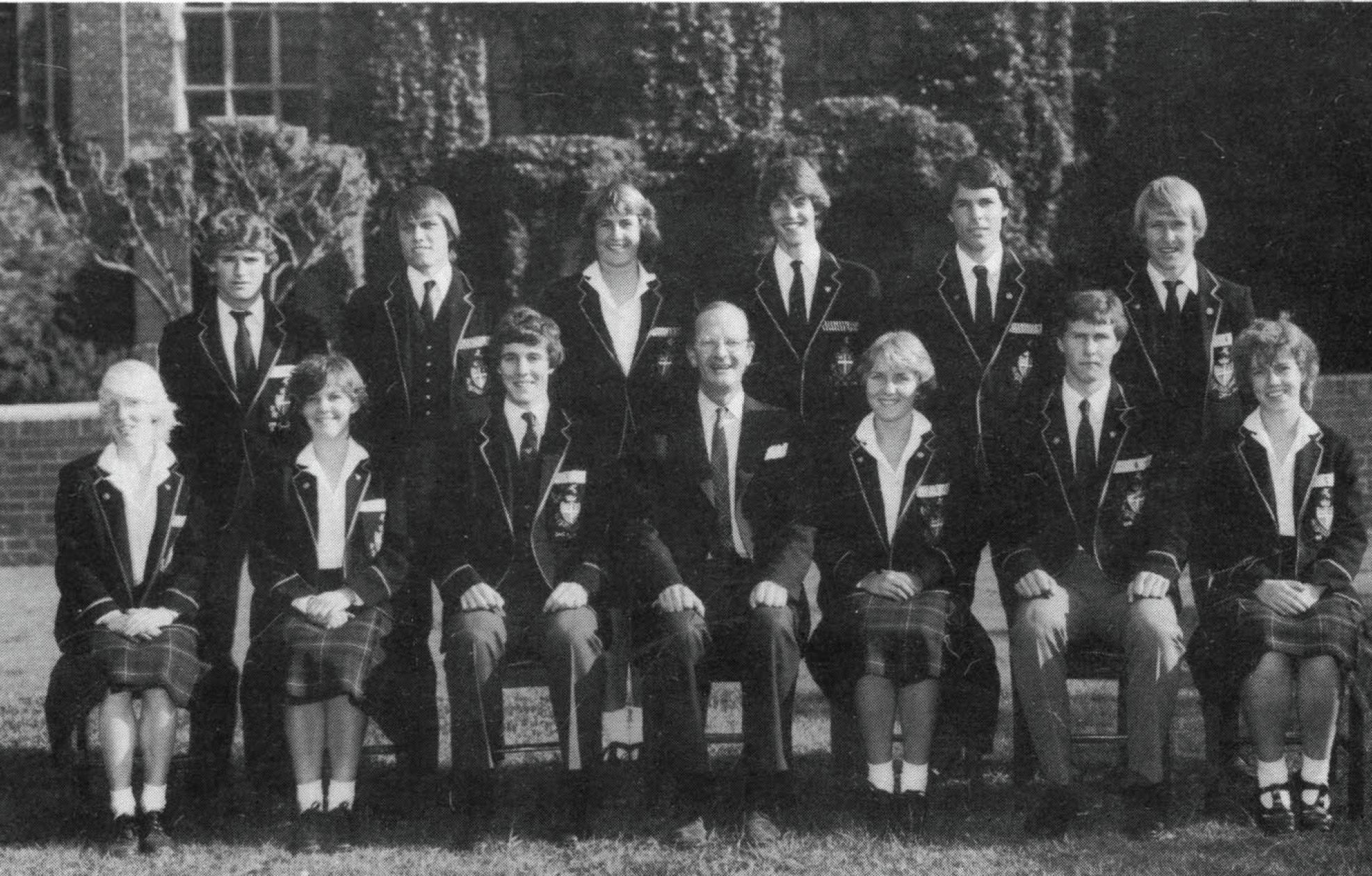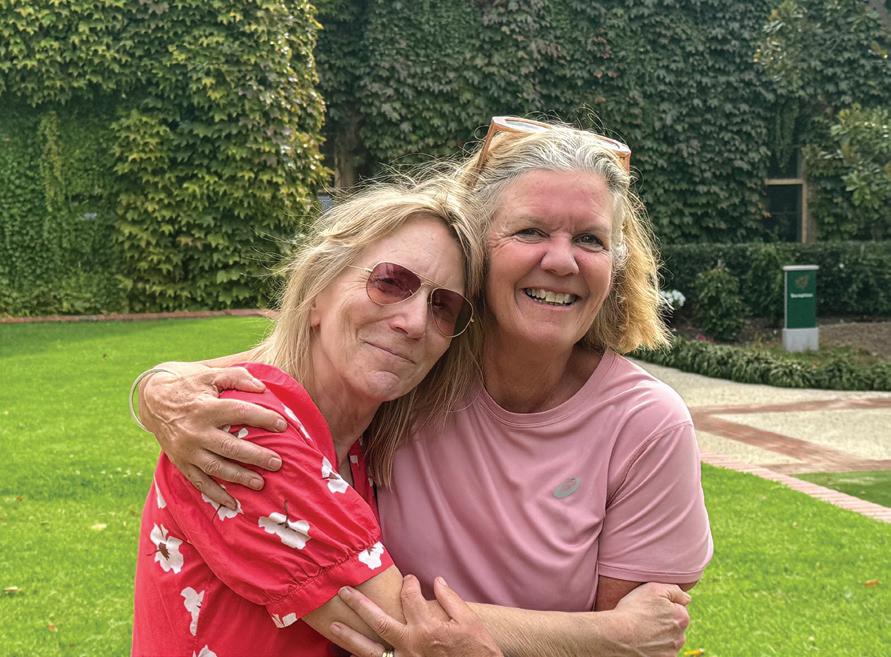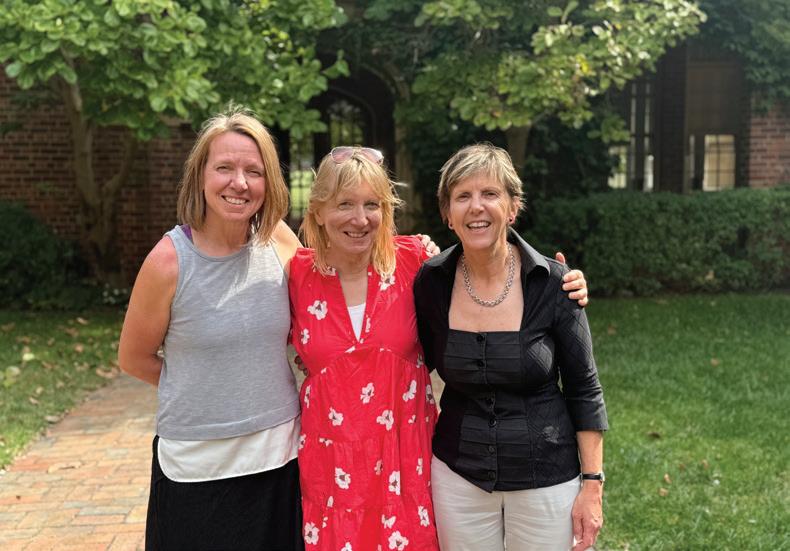
7 minute read
Lessons from across the Pacific
Kadee Supina (OGC 1982)
What happens when two American teens are dropped into an Australian school in the 1980s? Kadee Supina (OGC 1982) reflects on how an unexpected detour through TGC shaped a lifetime.
In 1977 our family was living a sheltered American life in Detroit when my father (James Supina) became the chief engineer for Ford Australia. He told us we would be moving to ‘Geelong’ but we didn’t find out until we arrived that we were pronouncing it wrong.
Australia may be an English-speaking, first-world country, but to our parochial preteen selves it was like moving to the moon:
School uniforms that changed with the seasons? What the heck is a biro? An icey pole? Magpies will cut you down where you stand and also - learn the metric system right now.
We went through most of our Australian initiation at a local Catholic school but transferred to The Geelong College in 1980 (I vaguely remember a knee-quaking interview with Principal, Peter Gebhardt).
College was where our true cultural assimilation began. We got to row and play cricket. We coveted RM Williams boots. We read, “For the Term of his Natural Life” and knew who Gough Whitlam was. We wore trakky dax and parked our bikes in the bike shed. We knew to call a clay tennis court ‘en tout cas’. College absorbed us and we temporarily forgot we were American.
But early in 1982 when Jennie (OGC 1983) was in Year 11 and I was starting my HSC, Dad was recalled to the US. Jennie was transferred to an all-girl Catholic high school back home. I was allowed to stay on as a boarder to finish Year 12, but I was put on a plane to Detroit ten days after my final exam.
Our mid-puberty, proto-Australian selves struggled with these transitions. Jennie wrote to me during that time to explain, with justified horror, that her classmates brought hair dryers to school so they could style their hair after PE.
After I returned, I floundered for eight months with an eating disorder until my university term began.
In our rearview mirrors, College loomed large and idyllic, all the more because we had to abandon it so abruptly.
I don’t mean to say we were crippled by nostalgia, though.
Jennie went on to graduate from Michigan Technological University as a metallurgical engineer and worked for 33 years in manufacturing companies like Medtronic and Whirlpool.
She “retired” in 2002 to work on special projects and training for EJ Inc., an international iron foundry that specialises in infrastructure castings (look for the distinctive ‘ej’ logo on street castings and manhole covers around the globe).
Also, she can light a fire anywhere, with one match and in the pouring rain.
I studied Art History at the University of Michigan and St. Andrews University and did my MA at St. John’s College and the University of Minnesota.
I worked for the National Building Museum and the American Institute of Architects and then ran my own flooring contracting firm for 25 years. And played roller derby.
We’ve matured enough to acknowledge we idealised and romanticised our time at College, but also that it had long-lasting effects, well beyond just the memories of the three years we spent there.
This past March, Jennie and I made it back to the College for a long tour, as part of an extended visit back to Australia.
That tour rocked me. I saw lines that originated in the time I spent at College connect straight to the person I’ve become. I’m talking about essential human experiences and a sense of connectedness that runs far deeper than just how much money I earned in my career.
Sometimes outsiders can see aspects of a time or place that are invisible to those who live there. Here is an impertinent, alternative look at how the College has, and hopefully continues, to influence the students who attend it.
Five reasons why I wish every American could have gone to The Geelong College in 1980:
1. Perspective. It allowed us to see America from a distance. Australians and even Australian secondary students at that time were informed and aware of world events and it was lifechanging to see how strange and self-important the United States looked through their eyes. It made me understand that even the metaphors I used to persuade were limited and regional. I wrote an essay where I argued that a concept was ‘brought home’ and one of the College’s illustrious English teachers responded with the critique, “One brings home groceries, not ideas.”
2. So much green space. What is still astonishing about the modern Geelong College is how much open area has been protected, even as new buildings have been added. That space allows students to be in the actual outdoors between every single class. We spent recess and lunch in the open air, usually sitting right on the grass. The ability to regularly rinse your mind out by walking out of doors is deeply underestimated. And because of all that space, the entire school took lunch all at the same time. This seems like such a small detail, but it meant that all the different class levels paused their day together, a shared reset that was unifying.
3. Sport. I can’t believe I am actually including this because when I first transferred to College, I was outraged at the idea of requiring sport after school. Surely I would be granted some waiver, once my lack of any sporting ability whatsoever was discovered. But no, I had to “play” something. It started, and I am not making this up, with roller skating. Then yoga on the heated floor of the House of Guilds. Then I got up the nerve to play intramural tennis. I was the double-fault queen, but I played. Then I tried rowing and eventually became a coxswain. In Year 12, I was bribed by Shannon Head of House with the promise that I would get my House hockey colours if I played goalie for just one game. The point is, in a school that valued sporting ability so very highly, the sheer number of options they offered for people who were not good at sport was astonishing. I owe my lifelong love of movement, and my greatly reduced fear of learning new things, to the damn sport requirements of The Geelong College.
4. Faculty. I attended the College during the Gebhardt era, which I have come to understand was controversial. But there is no denying that the quality of the teaching during my years at College was off the charts. They chose challenging texts that were outside the canon and they aligned the drama department with the literature department for studying Shakespeare. They hired poets, philosophers, and actors who were also great explainers. I know now that they were all teaching under pressure to produce students with great exam results, but that was not my classroom experience. We were given the freedom to dig into literature with pickaxes, explore meaning, and make mistakes. There was time for wonder and weirdness. By the time I finished, I had absorbed the equivalent of two years at university. And yet, if you faffed about, they did not mince words. I believe I heard, “Some people are amazingly sh*thouse at stoichiometry,” directed at me more than once.
5. Entrepreneurship. A huge percentage of the Collegians I am still in touch with ended up going into business for themselves. And while this sample set is somewhat small and anecdotal, it still suggests that College equips you with the skills to design your own path. We all wore the same uniforms and honored the same hallowed traditions, but somehow we all came out of the mould a different shape. Being self-employed involves risk-taking, improvisational moxie, and a lust for variety and independence. I think that counts as a thoroughly modern interpretation of ‘straining for the stars’.












